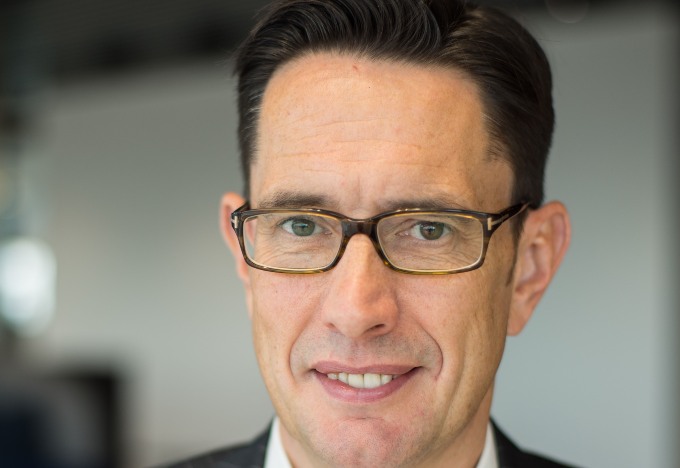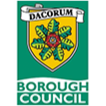Built Environment Networking interview Richard Whitehead, Chair of Herts IQ
On Friday 25th September a number of senior decision makers and key stakeholders in the development and growth of Hertfordshire come together for the Built Environment Networking Essex and Hertfordshire Development conference. Off the back the event, Built Environment Networking caught up with one of the event’s speakers – Richard Whitehead, Chair of Herts IQ and Managing Director Building + Places, UK & Ireland, AECOM.
Could you set out for us what the focus of Hertfordshire Innovation Quarter is, what is the vision for the district?
Our vision is to create a business hub where innovation and sustainability in construction can thrive. We’re attracting a cluster of smart construction companies to locate in Hertfordshire IQ, creating 8,000 new jobs. As well as 3 million sqft of new commercial space over 10 years, we’re creating an ecosystem that supports innovation and growth. Our innovation partner is global leader in the built environment BRE Group and we’re working with education partners like the University of Hertfordshire to make sure industry has the talent it needs to grow.
What are some firms you have already attracted to Herts IQ, what types of occupiers does the innovation quarter seek out?
We’re talking to Offsite manufacturers, who are looking to expand and take advantage of the market access in Hertfordshire. We’re also talking to start ups and established smart construction businesses, who are attracted by the opportunities to collaborate with our innovation partner BRE Group. We already have a number of construction supply chain firms located in Herts IQ in Hemel Hempstead, including a waste management company leading the way in the circular economy in construction, by setting a new standard for waste management through the recycling of 99% of waste and diverting 100% from landfill. We also have a company based on campus with BRE Group that is innovating in solar panel production.
How have you succeeded in creating green business space, what sets the Herts IQ’s space apart from other comparable offerings, how do you reflect those green credentials within its built environment?
Sustainability is the heart of everything we do. Our sustainability charter sets out our ambitions around all aspects of place making from promoting biodiversity to sustainable transport and energy. We’re working with developers who share these values. For example, Prologis Park Hemel Hempstead in Herts IQ is built to BRE’s BREEAM ‘Very Good’ accreditation with free energy from rooftop solar panels, rainwater harvesting, a solar thermal hot water system, electric car charging spaces and The Planet Mark certification. Hertfordshire LEP has also invested £3m from the Local Growth Fund, match funded by £3m from The Crown Estate, to redesign access to J8 of the M1 that will enable the long term development of sustainable transport and in the short term, a pedestrian bridge and new cycle paths.
How will Herts Innovation Quarter evolve and grow over the coming years, how are you seeking to expand and what will drive it?
There’s been a lot of debate about future workplaces and the need for a more sustainable blend of work/life balance. We’re blending of that together with an aspirational ‘live, work, play’ ethos, embedded into the design of our places for future communities. We will offer employers and employees flexible, attractive collaboration spaces and outstanding digital connectivity. We’re also working in tandem with Hemel Garden Communities, a government funded Garden Town that will see the transformation of Hemel Hempstead and the creation of a new, sustainable community, supported by Herts IQ.
How has the county fared economically during the pandemic and what do you see as key to its long term recovery from the economic fallout?
As with the rest of the UK, we’ve seen a significant loss in employment, and this has had a knock on effect on our productivity. However, we still have significant viability and the support to get our economy back on track. Hertfordshire LEP has developed an Economic Recovery Plan focused around delivery packages for businesses and our workforce, which leverages the strength of industries like construction and attracts further inward investment.
Hertfordshire benefits from its position in close proximity to London, is it moving closer to become its own economic hub, would you say it has already reached that point?
There’s an opportunity to respond to the city and its changing needs through our place making, in a way that’s relevant and sustainable. Unlike many areas in London, we haven’t yet reached capacity in Hertfordshire. We have 3 million sqft of new commercial space being developed in Herts IQ alone, so we are still a county of opportunity. Plus we have a skilled workforce and the support of our education providers to keep pace with the changing needs of the industry.
Herts IQ is a flagship programme for Hertfordshire Local Enterprise Partnership. What more does the LEP do to proactively facilitate growth?
Hertfordshire LEP’s purpose is to drive inclusive, sustainable economic recovery and growth for Hertfordshire. We have secured a £16.8m share of Getting Building funding to help kickstart local growth focused on Hertfordshire’s key industries, including construction.
These ‘shovel-ready’ projects will create over 1,500 jobs and unlock over 12,100 sq. m. of commercial space in the county. We’ve also secured a major increase in Growth Hub funding (from £10m to £72m) to support SMEs and supply chain, who are key to recovery and long-term growth. We’re also working with our local partners to support place-based innovation and town centre regeneration.








